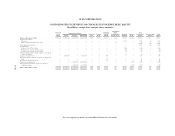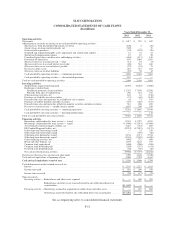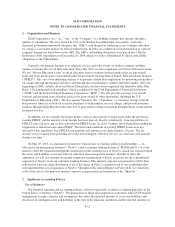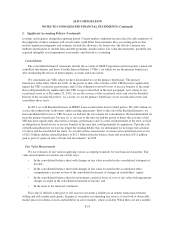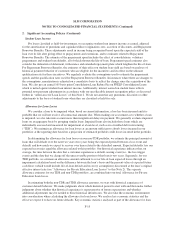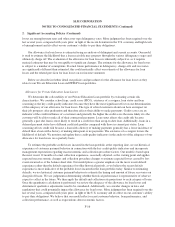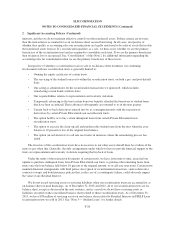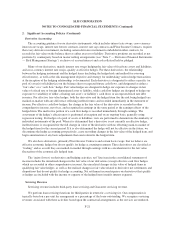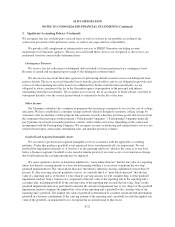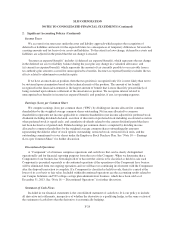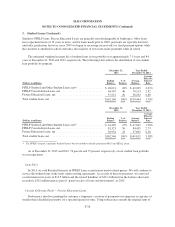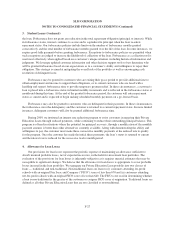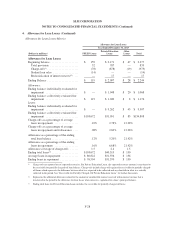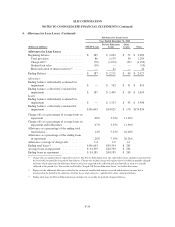Sallie Mae 2013 Annual Report Download - page 158
Download and view the complete annual report
Please find page 158 of the 2013 Sallie Mae annual report below. You can navigate through the pages in the report by either clicking on the pages listed below, or by using the keyword search tool below to find specific information within the annual report.SLM CORPORATION
NOTES TO CONSOLIDATED FINANCIAL STATEMENTS (Continued)
2. Significant Accounting Policies (Continued)
interests, and that we do not maintain effective control over the transferred assets. If these criteria are not met,
then the transaction is accounted for as an on-balance sheet secured borrowing. In all cases, irrespective of
whether they qualify as accounting sales our securitizations are legally structured to be sales of assets that isolate
the transferred assets from us. If a securitization qualifies as a sale, we then assess whether we are the primary
beneficiary of the securitization trust and are required to consolidate such trust. If we are the primary beneficiary
then no gain or loss is recognized. See “Consolidation” of this Note 2 for additional information regarding the
accounting rules for consolidation when we are the primary beneficiary of these trusts.
Irrespective of whether a securitization receives sale or on-balance sheet treatment, our continuing
involvement with our securitization trusts is generally limited to:
• Owning the equity certificates of certain trusts.
• The servicing of the student loan assets within the securitization trusts, on both a pre- and post-default
basis.
• Our acting as administrator for the securitization transactions we sponsored, which includes
remarketing certain bonds at future dates.
• Our responsibilities relative to representation and warranty violations.
• Temporarily advancing to the trust certain borrower benefits afforded the borrowers of student loans
that have been securitized. These advances subsequently are returned to us in the next quarter.
• Certain back-to-back derivatives entered into by us contemporaneously with the execution of
derivatives by certain Private Education Loan securitization trusts.
• The option held by us to buy certain delinquent loans from certain Private Education Loan
securitization trusts.
• The option to exercise the clean-up call and purchase the student loans from the trust when the asset
balance is 10 percent or less of the original loan balance.
• The option (in certain trusts) to call rate reset notes in instances where the remarketing process has
failed.
The investors of the securitization trusts have no recourse to our other assets should there be a failure of the
trusts to pay when due. Generally, the only arrangements under which we have to provide financial support to the
trusts are representation and warranty violations requiring the buyback of loans.
Under the terms of the transaction documents of certain trusts, we have, from time to time, exercised our
options to purchase delinquent loans from Private Education Loan trusts, to purchase the remaining loans from
trusts once the loan balance falls below 10 percent of the original amount, or to call rate reset notes. Certain trusts
maintain financial arrangements with third parties also typical of securitization transactions, such as derivative
contracts (swaps) and bond insurance policies that, in the case of a counterparty failure, could adversely impact
the value of any Residual Interest.
We do not record servicing assets or servicing liabilities when our securitization trusts are accounted for as
on-balance sheet secured financings. As of December 31, 2013 and 2012, all of our securitization trusts are on-
balance sheet, except as discussed in the next sentence, and as a result we do not have servicing assets or
liabilities recorded on the consolidated balance sheet related to these securitization trusts. As of December 31,
2013, we have $58 million of servicing assets on our balance sheet related to Residual Interests in FFELP Loan
securitization trusts we sold in 2013. See “Note 3 — Student Loans” for further details.
F-20


